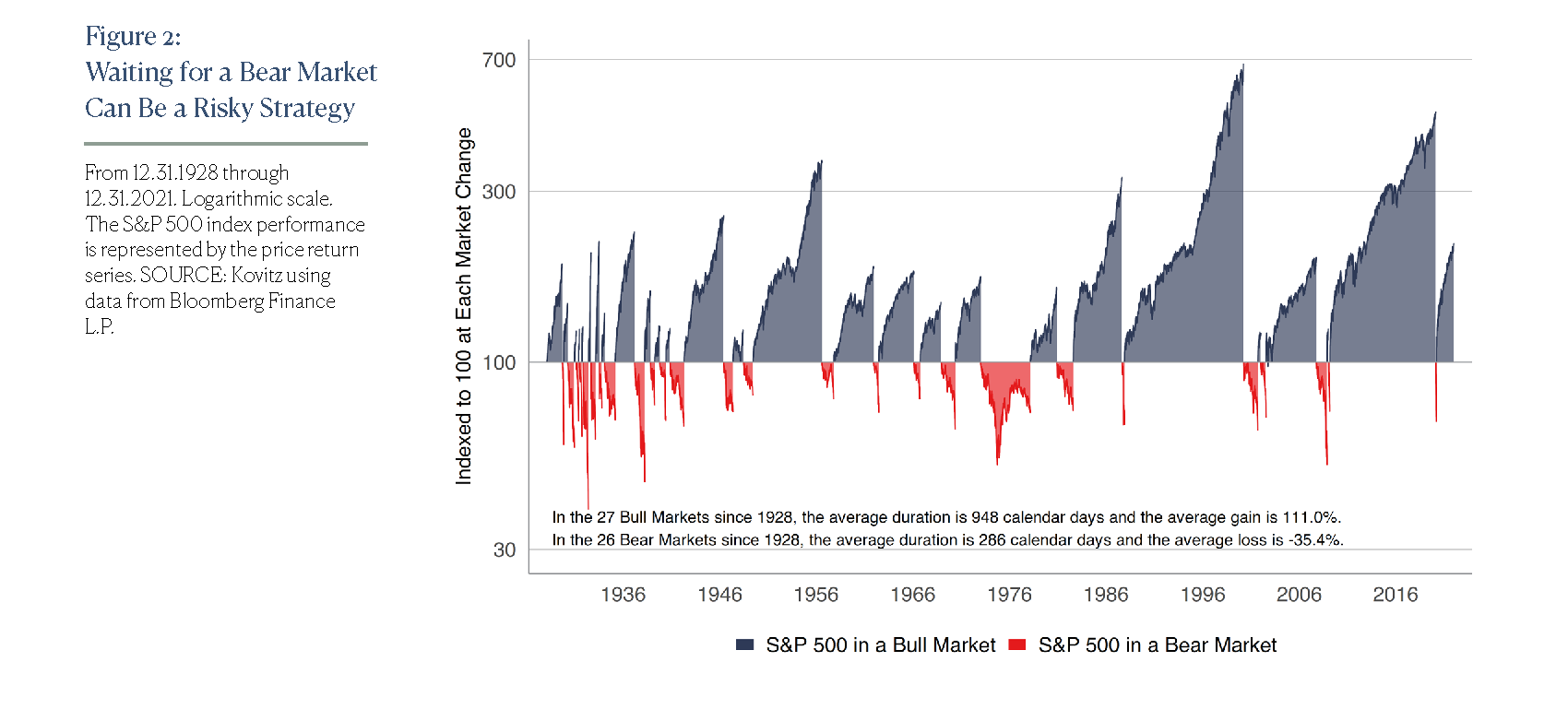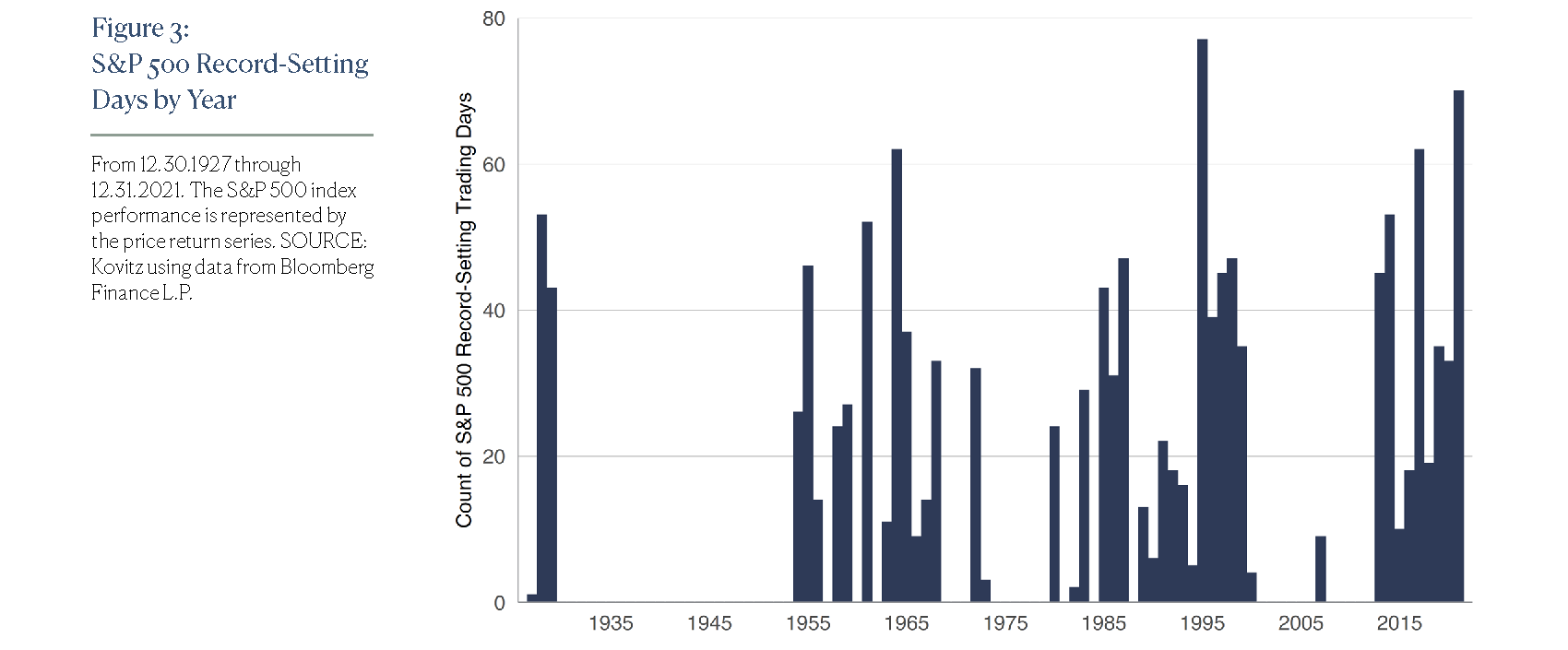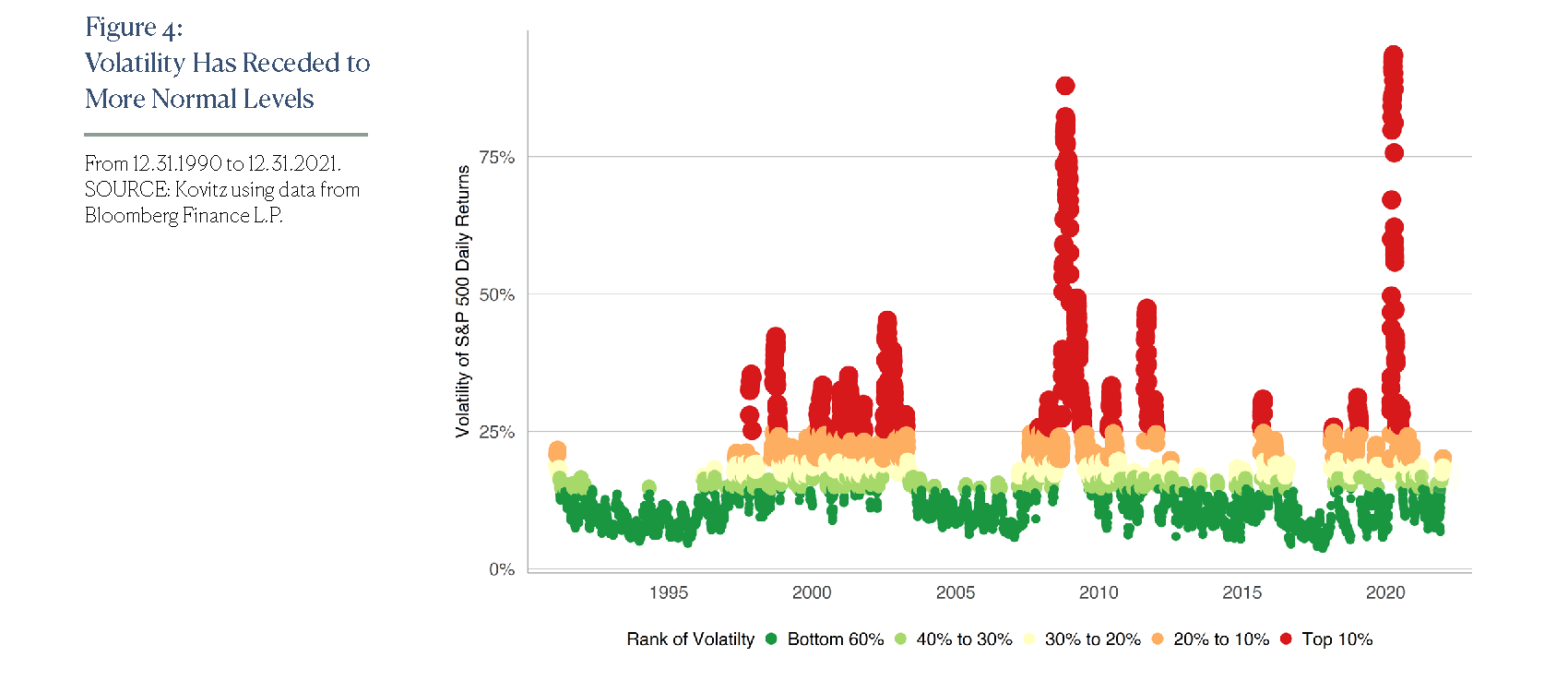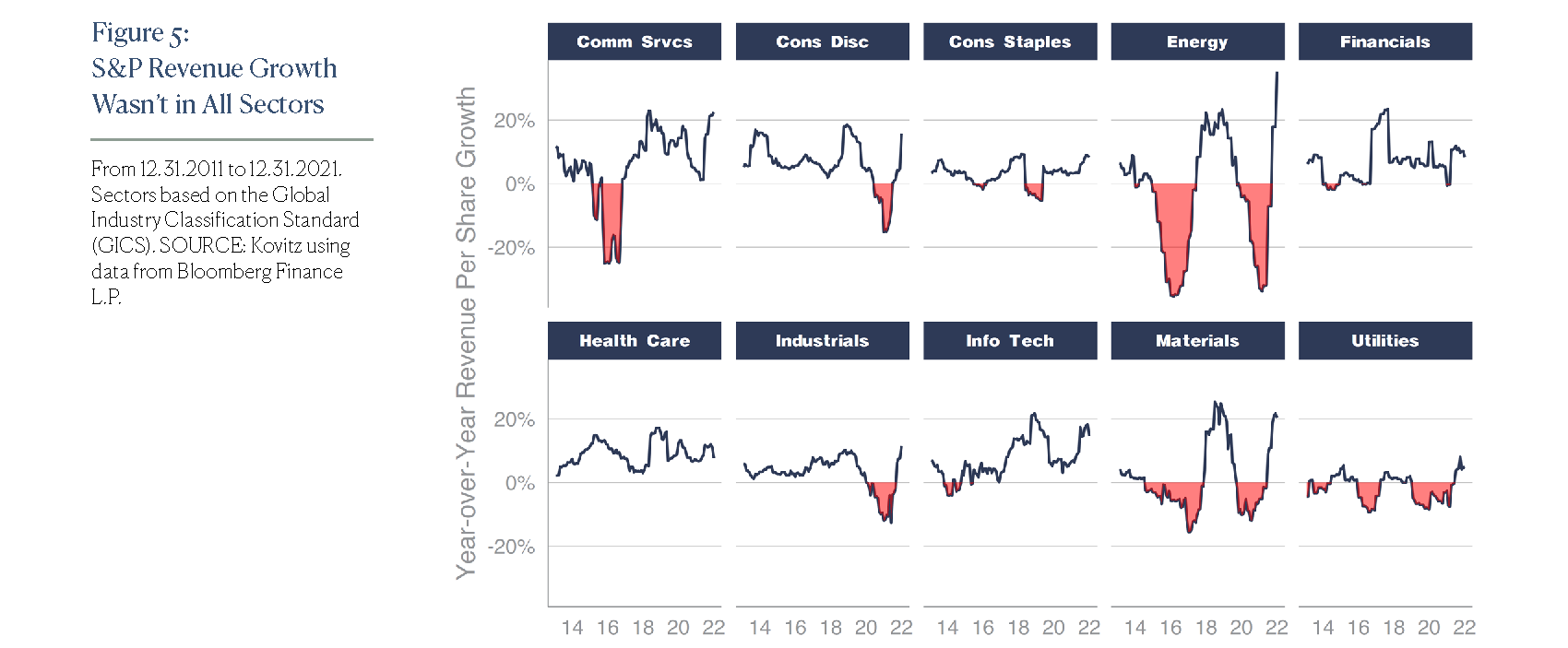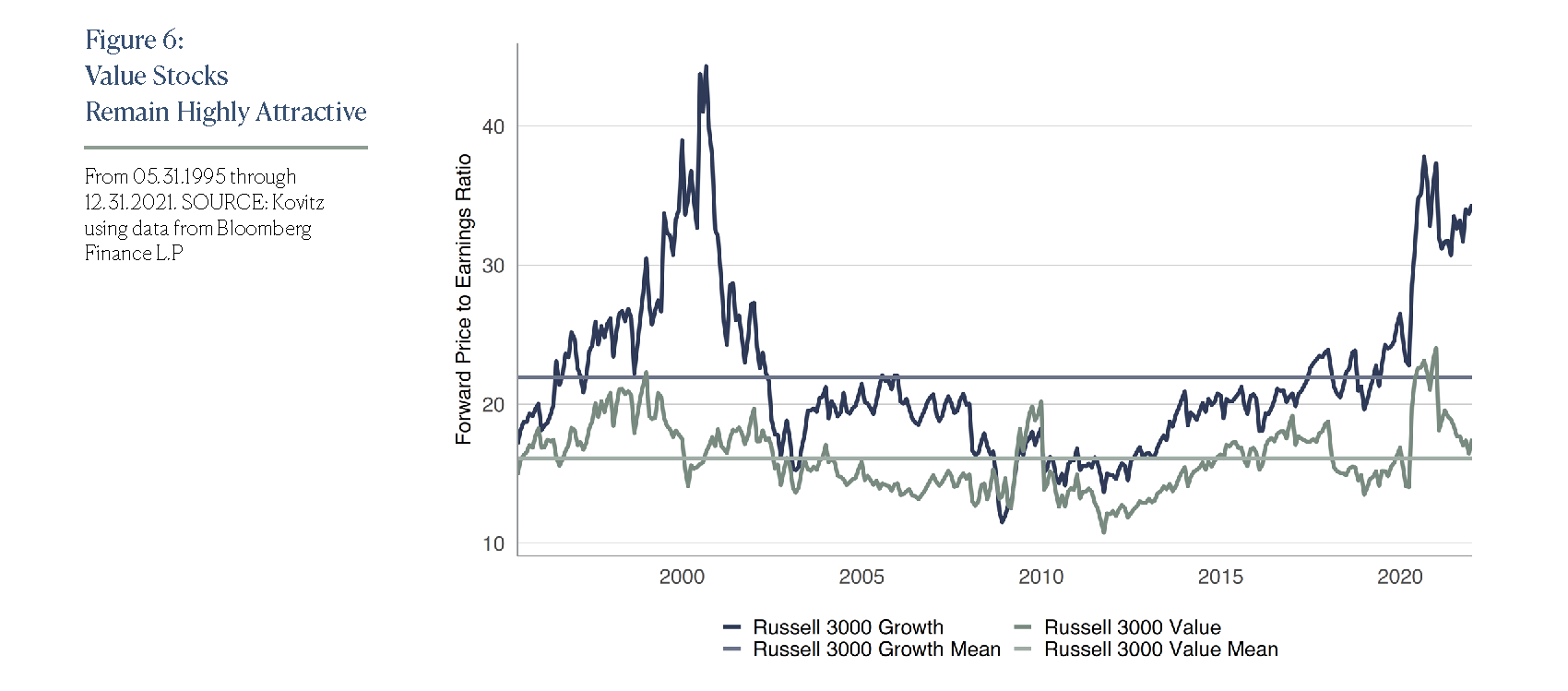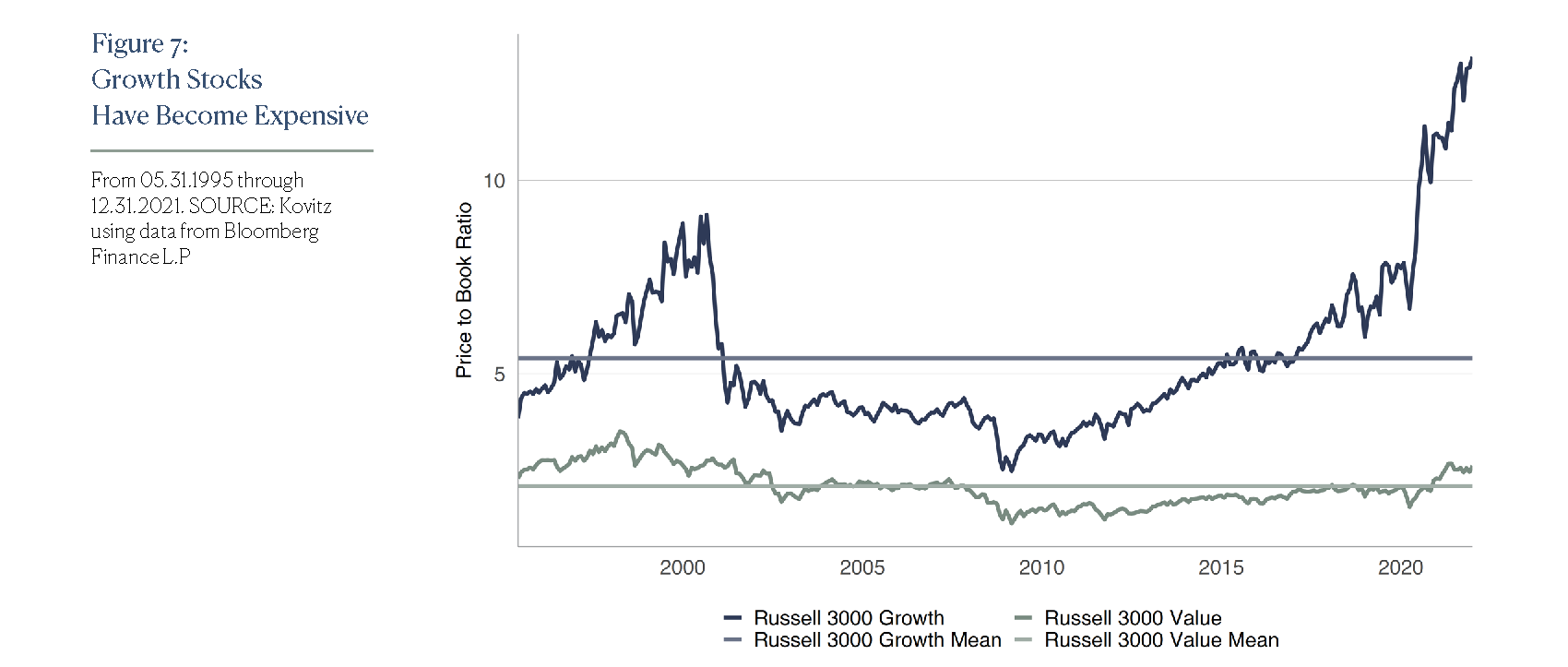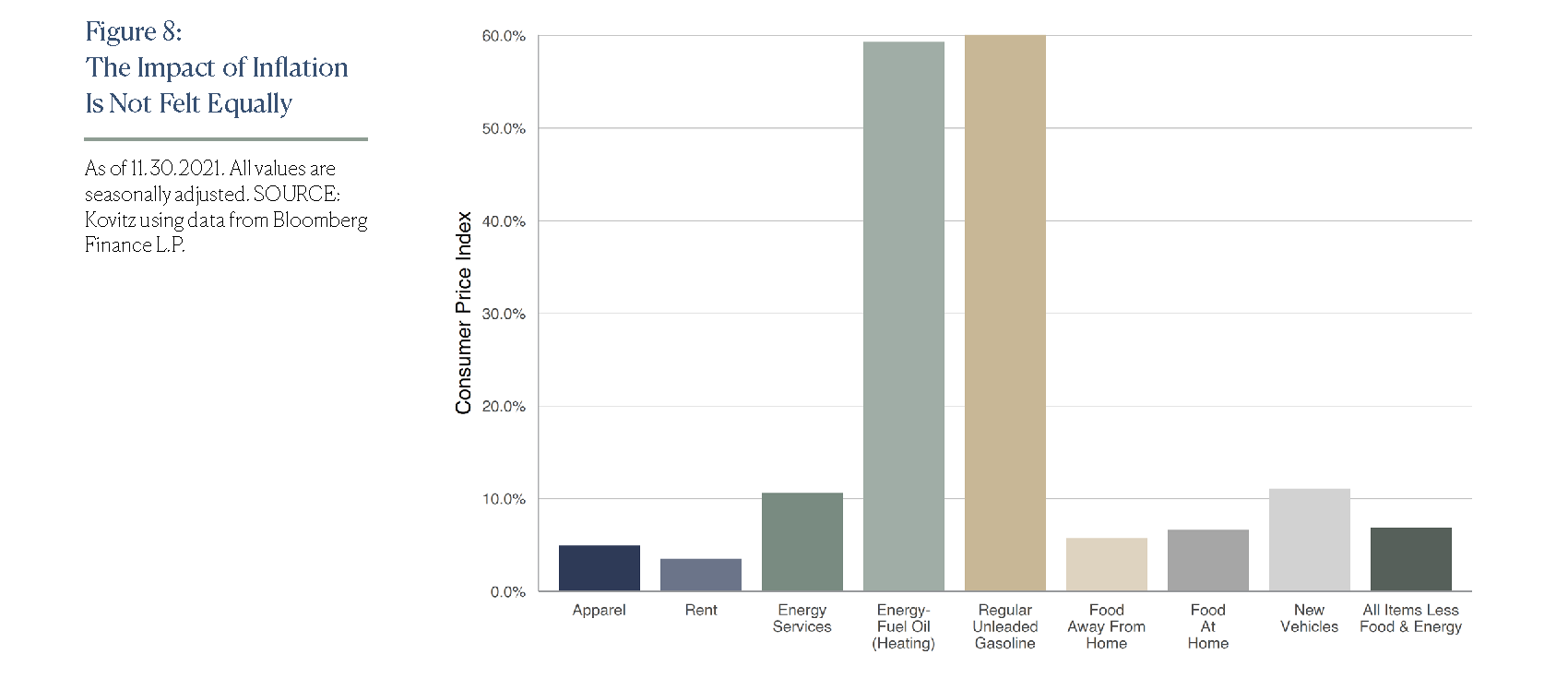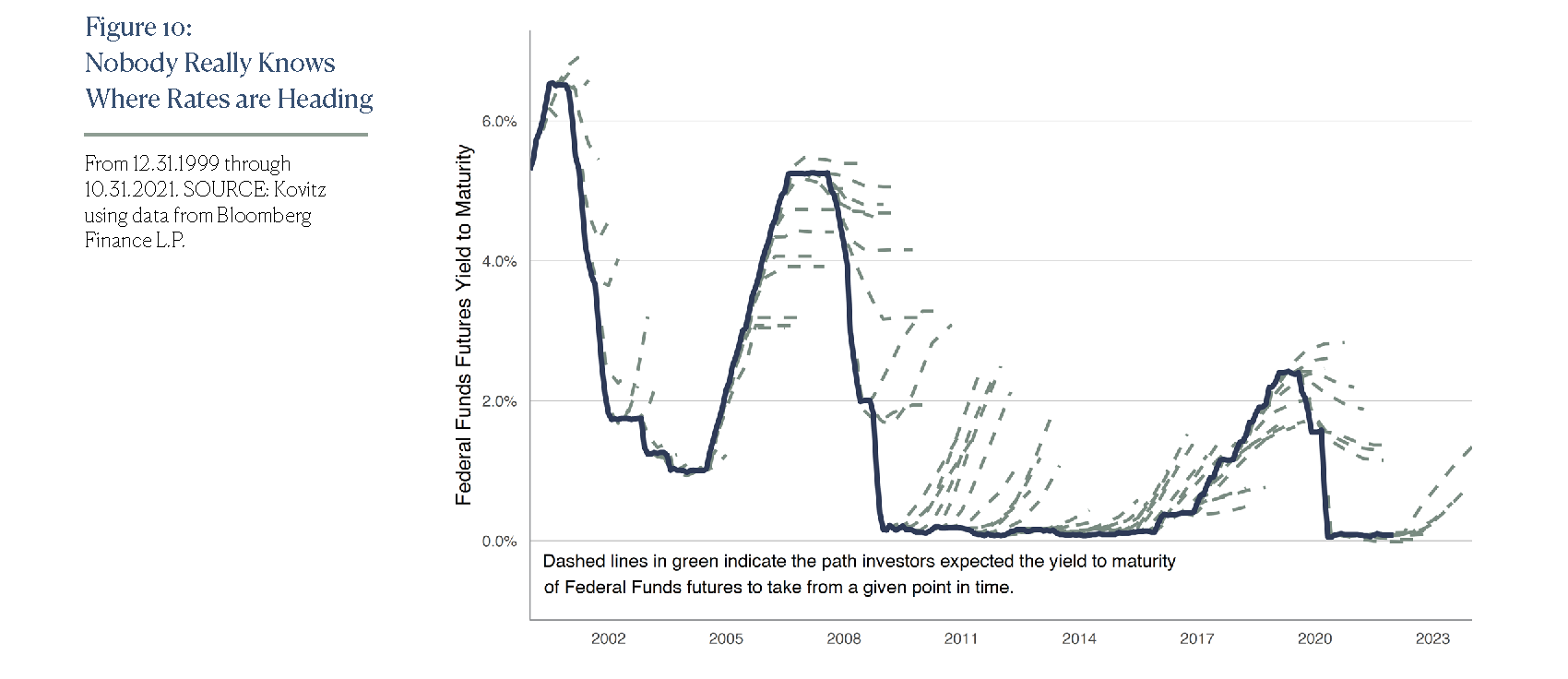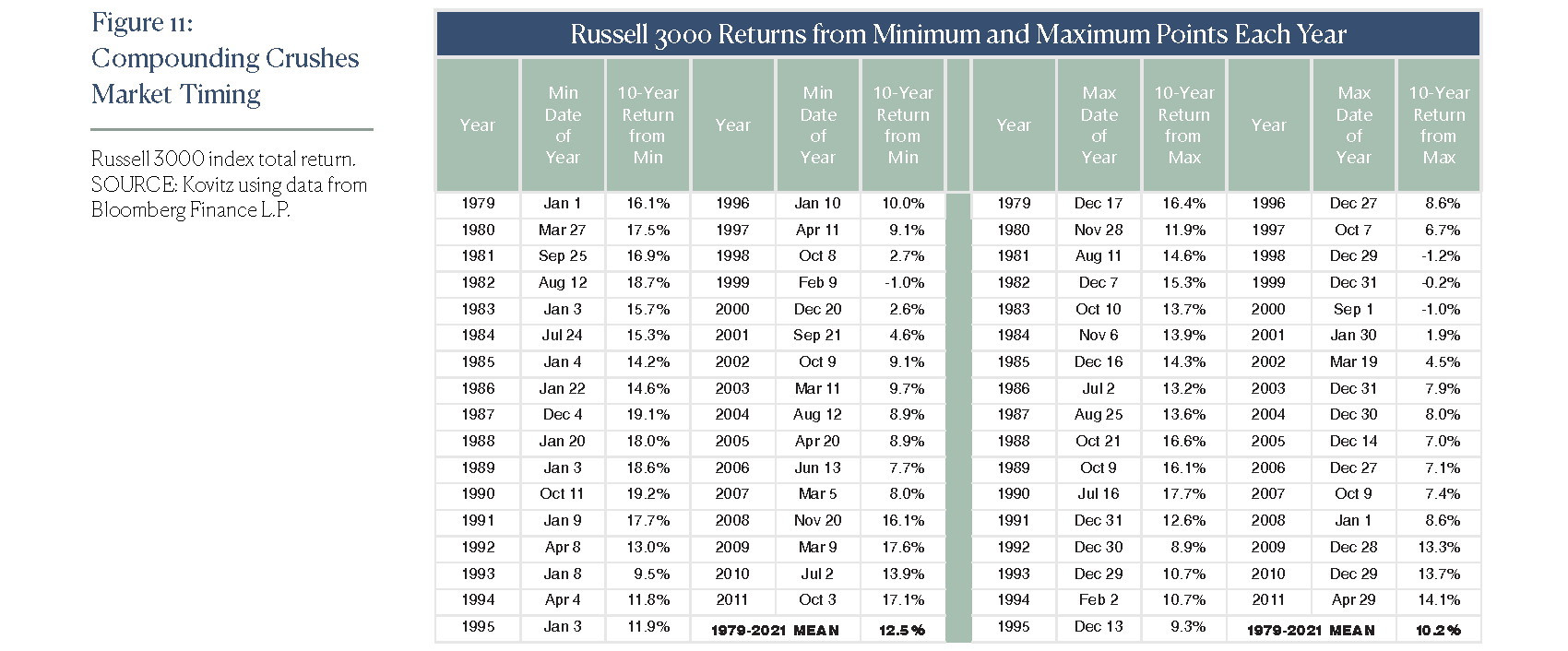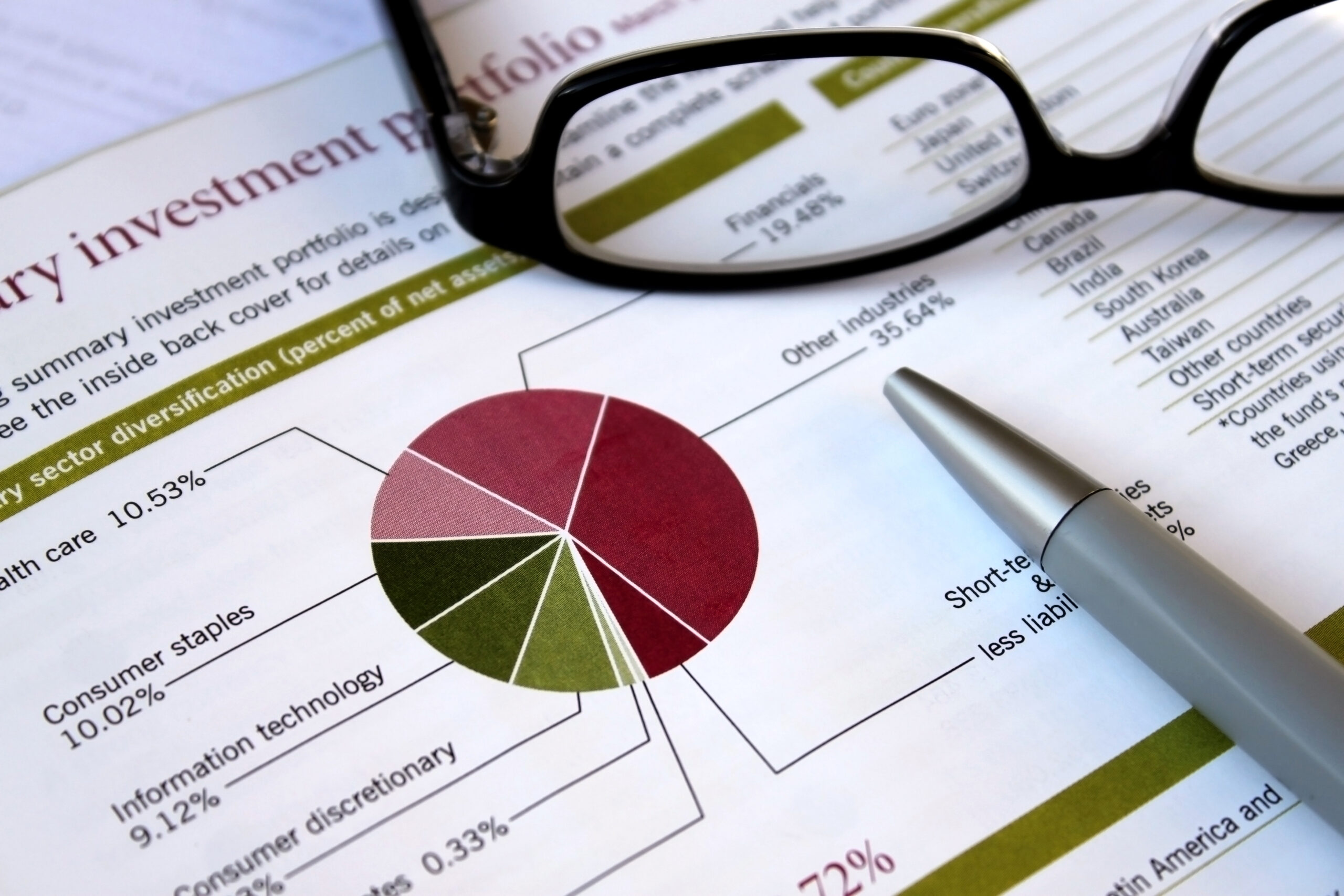The Most Important Charts of 2022 Special Report is available in Adobe pdf format by clicking clicking here.
“Read last year’s forecasts before you take next year’s too seriously,” advised Morgan Housel, a partner at The Collaborative Fund, to his Twitter followers. Sound advice, we think, even as our desks are stacked high with 2022 Outlooks to read from all of the major banks and investment houses. We even penned an outlook for readers of our newsletter, The Prudent Speculator (available gratis here). But we think investment shops often focus too much on the near term and skimp on the long term. It would be more valuable to highlight longer-term trends and themes, such as those we consider in the management of our TPS and ValuePlus portfolios. We insist our long-termism isn’t just for the outlook and is an important part of our investment processes, which expect to hold new positions three to five years or more.
Fortunately, we are not the only ones to notice the benefits of long-term investing. Using data from Professors Eugene F. Fama and Kenneth R. French, we find that Value stocks had a 63% chance of earning a positive return for any one month since 1927. Expanding the holding period to five years, the positivity rate jumps to 89.5% and holders of Value stocks over 15 years or more have never experienced losses. Growth stocks experience similar results, even though Growth stock returns have trailed Value stock returns over the last century. Yes, past performance is not predictive of future returns, but we like our odds and believe historical evidence helps support our insistence on fishing in the Value pond.
Don’t Abandon Ship
One of the best illustrations showing annual stock market gyrations is offered below. The red dots mark the low point each year from peak to trough and the navy bar is the final return for that year. In no year did the S&P 500 finish at its low point, and we suspect those that bailed out of equities in 2020 after the bottom fell out in March are doing some major face-palming.
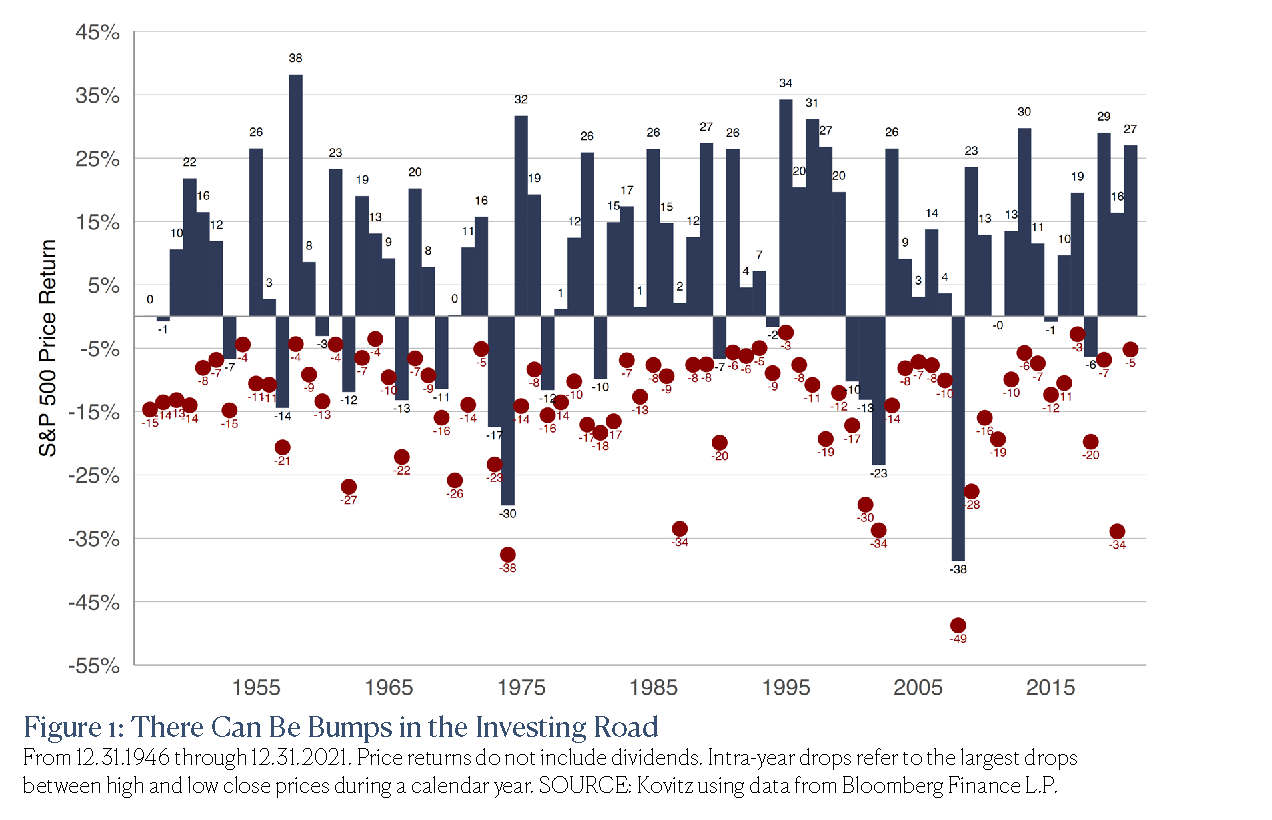
The Fear of Loss versus the Fear of Missing Out
Bear Markets (a 20%+ price decline from the prior peak in the S&P 500) have occurred frequently since 1928 (every 3.5 years or so) and have been relatively short, lasting just 286 days on average compared to the Bull Market average length of 948 days. We do appreciate the emotional toll a Bear Market can take on investors and we do not enjoy them either, but we suspect waiting for a pullback to deploy capital can be more damaging to returns than the Bear Market itself.

The Temptation to Wait
It was tempting to want to accumulate cash at the end of 2020, with the feeling the market had “come too far, too fast” cropping up in a large percentage of the 2021 outlooks we read. But those that succumbed to the temptation would have missed out on the 70 all-time highs set in 2021 by the S&P 500, missing the record of 77 set in 1995. We don’t pretend to know the future, but we again like our odds of future records given that the index’s annualized return since 1927 is 10.3%.

VOLATILITY HAS CALMED
As COVID-19 infections spread around the world, volatility soared in 2020 to levels not experienced since the Great Recession. While news of the omicron variant didn’t help calm any nerves, volatility remains on the low end of the spectrum. Equities always seem to be climbing the Wall of Worry, and as a result we see spikes in volatility as opportunities to enhance our portfolios, rather than bail on our long-term investments.

MANY SECTORS ARE STILL GROWING
The pandemic-related fallout impacted equities differently, depending on the sector. For the Information Technology, Health Care and Communication Services (which has a hefty weight in high-flying Alphabet, Facebook—now Meta Platforms—and Netflix) sectors, the pandemic resulted in strong growth, while the Energy, Materials and Industrials sectors have suffered. We would not be surprised to see some of the struggling sectors bounce back to growth.

VALUE STOCKS REMAIN ATTRACTIVE
One of the most common valuation metrics, the Price-to-Earnings (P/E) ratio measures the price an investor pays for a unit of earnings. Value stocks, a group with lower P/E ratios, have seen their ratios rise, but not as much as Growth stocks, the group with high P/E ratios. The last time the valuation gap (the difference between the Growth P/E and the Value P/E) was this wide was around the New Millennium, which was the beginning of a terrific run for Value investors.

P/E ISN’T the only measure
Another measure frequently used in an academic classification of Value and Growth stocks is the Price-to-Book ratio. It measures the difference between a company’s market value (i.e. market capitalization) and book value (assets less liabilities). The valuation gap is even wider for P/B ratios than P/E ratios. And just like in Figure 6, the last time the gap was this wide was around the New Millennium.

PRICES HAVE SOARED
Motor fuel and heating costs have jumped, while other categories in consumer spending have experienced more tame increases. Still, the nearly 7% jump in consumer prices (excluding food and energy) has been painful for many households. We believe many of the headwinds that spurred the jump in inflation are short-term in nature and supply-chain challenges should subside, leading to more tolerable price increases.

INFLATION ISn’T TERRIBLE FOR STOCKS
If the historical returns since 1927 in Figure 9 are any indication, we would argue that stocks have fared quite well while inflation is on the rise. Yes, investors do not appreciate uncertainty and spikes in consumer prices like those at the end of 2021 are harder to stomach than gradual changes in the price level. But it seems equities might even function as a quality inflation hedge, as many companies can adjust their businesses and charge customers more to account for increased costs.
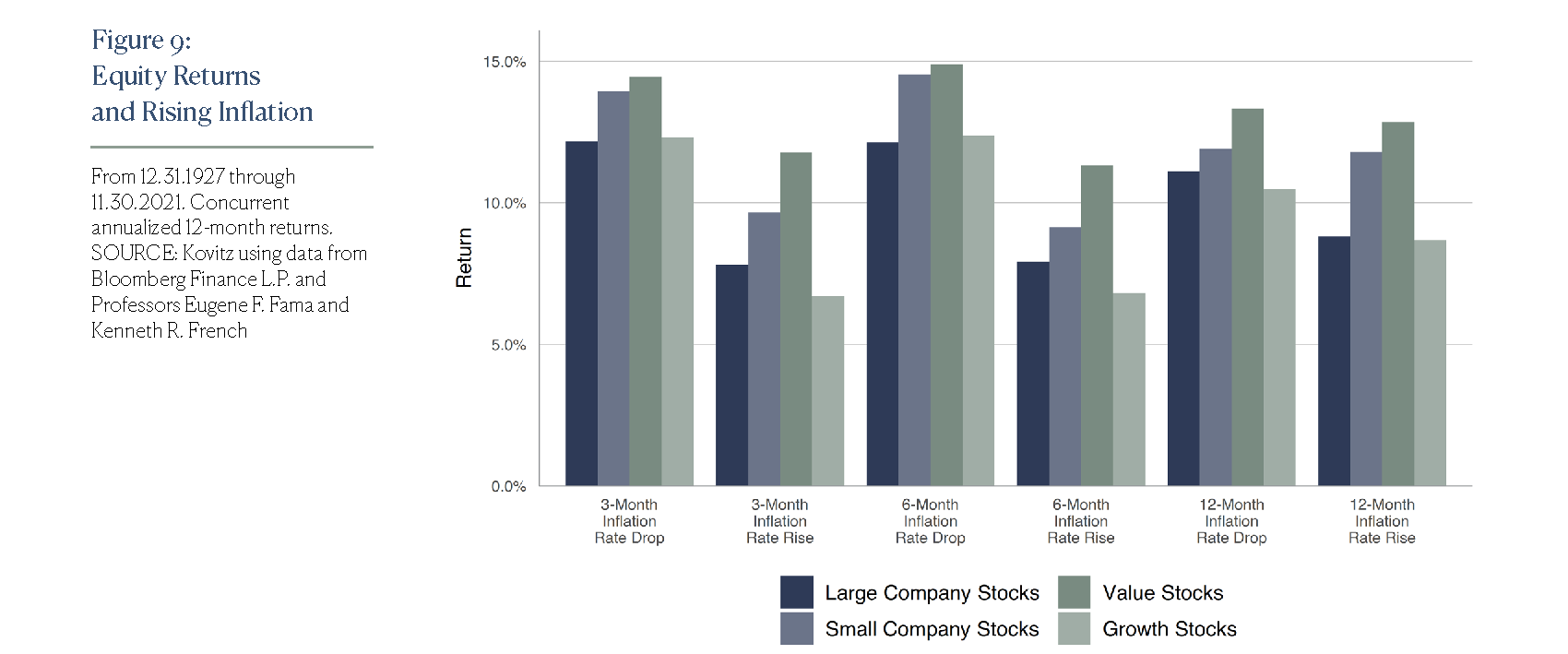
THE MARKET ISN’T ALWAYS RIGHT
Many market participants scrutinize the Fed’s notes to get a jump on investment decisions, but Figure 10 shows rate change expectations do not match the experience. Minutes from the Federal Reserve’s meeting in December indicated the central bank’s members are ready to raise rates “sooner or at a faster pace than participants had earlier anticipated.” The release on January 5 sent bond rates up and equities down, with many pundits confident that the hiking cycle would start in March.

THE BEST TIME TO INVEST IS…NOW
We have long been of the mind that time in the market trumps market timing and history shows that it generally is best to let compounding commence sooner rather than later. Some may argue that it is an apples to oranges comparison, given the differences in starting and ending periods, but Figure 11 shows that average subsequent 10-year returns beginning at even the highest point each year were still very good.

EYES ON THE ROAD AHEAD
We hope this chart book was reassuring (except maybe the inflation graphic in Figure 8), and we have long argued that the secret to success in investing is not simply to select good stocks, but to not get scared out of them. And we offer a gentle reminder that we have wealth and asset management services available for folks that might benefit from our expertise.
As we head into 2022, we remain enthusiastic about the prospects for our Value-oriented, broadly diversified portfolios and wish our readers a grand start to 2022.
There’s More
We frequently publish market-oriented content on our Blog and reach thousands of subscribers each through our weekly Market Commentary and monthly Newsletter, which are available here.
Should you be interested in our Wealth Management services, please click here.

